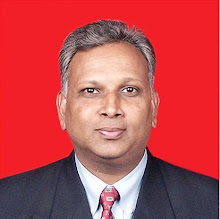India
Bibek Debroy Posted: Oct 08, 2008 at 0034 hrs IST
|
![]() >
>
Not long ago, the World Bank increased
But why are we interested in such poverty numbers? Because we are driven by equity considerations and want to do something for poverty alleviation, so that growth becomes inclusive and divides and disparities are reduced. Hence, we have a fleet of anti-poverty programmes, led by so-called flagship schemes. The sub-conscious is probably at work in use of the expression “flagship”. A fleet is led by a single flagship. If there are several flagships, it is reasonable to deduce we don’t quite know what to do about poverty (beyond trickle-down effects of growth) and are therefore firing several pellets from a shotgun, in the hope that something somewhere will stick. Broadly, these anti-poverty programmes are either collective or individual. Bharat Nirman and Pradhan Mantri Gram Sadak Yojana are instances of collective interventions, since they build physical or social infrastructure perceived to be public goods. In contrast, there are programmes like National Rural Employment Guarantee (NREG) or Indira Awaas Yojana, directed towards the individual poor person. They provide private goods, not public ones, but subsidise the poor. No one can question the idea of subsidising the poor, provided we know who they are. This has proved to be an intractable problem since 1991, and even before.
Who are these 250 million people? The question shouldn’t be ducked. Nor should we avoid the question by suggesting all SC/ST/ OBC/Muslims are poor and all non-SC/ST/OBC/Muslims are non-poor. There is a double problem with any surveys on poverty, the NSS included. First, data become dated. Second, and more important, these are surveys, not censuses. Knowing there are 250 million poor people isn’t of much use, unless we can ascribe names, faces and addresses to these numbers. This identification has also been a problem when some states have undertaken their own surveys on poverty. So we resorted to decentralised identification through surveys during the Ninth Plan (1997-2002), especially for rural
Such decentralised identification based on ownership of physical assets (and similar variables) sounds eminently sensible, particularly because panchayats are involved. But it hasn’t worked that way. Consider how the system works. On each parameter, you get a score. Each parameter has a weight and the scores are thus aggregated to obtain an overall BPL (below the poverty line) index value. No matter how decentralised the survey, this is bound to be perceived as a top-down approach, since choice of parameters, choice of weights and formulae for aggregation are all inherently subjective decisions. For every method suggested, an equally plausible alternative is possible. This is the stuff one writes academic papers with, not use it for framing public policy on such a sensitive issue, where a double mistake is possible — identifying poor as non-poor and identifying non-poor as poor. It is always best if one can figure out some method of self-identification. Old people belong to a different category. Of the 77 million old (more than 60) people in
There are schemes like
The rural development ministry prides itself on NREG being IT-savvy, through involvement of NIC and TCS (especially in Andhra). Since Indian IT/ITES companies have been providing software services to the rest of the world, shouldn’t their services be used in
The writer is a noted economist

No comments:
Post a Comment